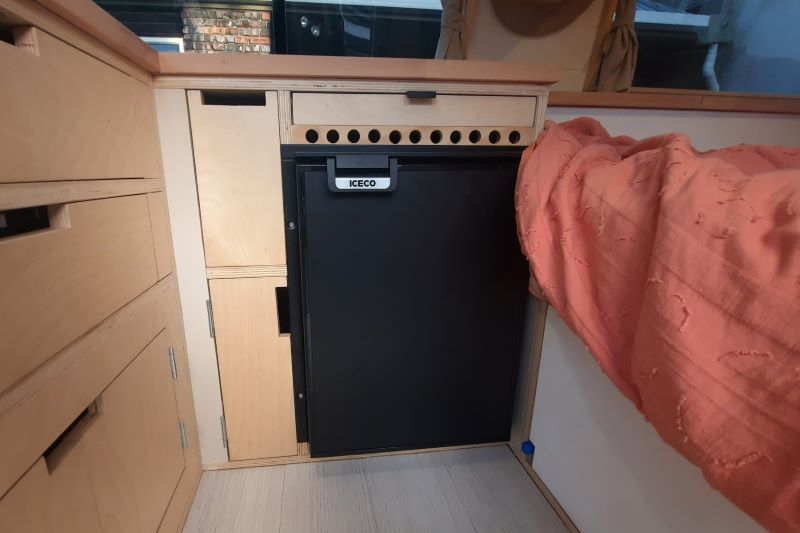Thanks for your support! If you make a purchase using our links in this article, we may make a commission. And, as an Amazon Associate, I earn from qualifying purchases. See the full disclosure here.
Prospective boondockers and those pining for a life off the grid are often curious as to whether or not you need an inverter to run a 12v RV fridge. After all, inverters are synonymous with RVs, capable of converting DC to AC for the appliances that need it.
If you’re looking to disappear over the far horizon and get away from it all, you’re in luck. You won’t need an inverter to run a 12v RV fridge because it will run on batteries just fine. In fact, with the right setup, you may get well over a hundred hours on a single charge.
That “right setup” thing is key, however, because batteries are unfortunately finite. There are no miraculous Tesla coils here, just good old-fashioned solar power or a solid, reliable generator. This is enough to keep you off the grid indefinitely if that’s what you’re looking for.
What is a 12v RV Fridge?
A 12v RV fridge is an appliance that doesn’t require an inverter because it doesn’t need the AC conversion and the 120v power source. It also doesn’t need propane. At a minimum, it needs a lead-acid battery (lithium is highly preferable) and something to keep the juice topped off.
We’re not talking about the portable 12v varieties here either, though they are growing in popularity and are small enough to serve as a functional backup. The RV fridges in this discussion are the built-in version in RVs with a mind for boondocking or unplugging from society for a while.
These are compression refrigerators, not the absorption kind that can run on propane and their power needs are not as substantial. The batteries can get quite expensive, especially if you opt for lithium, but it’s more than worth the cost.
How Does a 12v RV Fridge Work?
A 12v RV fridge is a compressor-type and it cools by, well, compression. Diving into the compressor and condenser process will make you wonder why there’s no need for an inverter to run a 12v RV fridge.
It sounds way more complicated than it is and it’s actually less complicated than larger variations and absorption types. Broken down the process looks like this:
- The compressor places immense pressure on the refrigerant, converting it into high-temp steam
- The condenser takes the high-temp steam and separates…
Click Here to Read the Full Original Article at RVBlogger…
